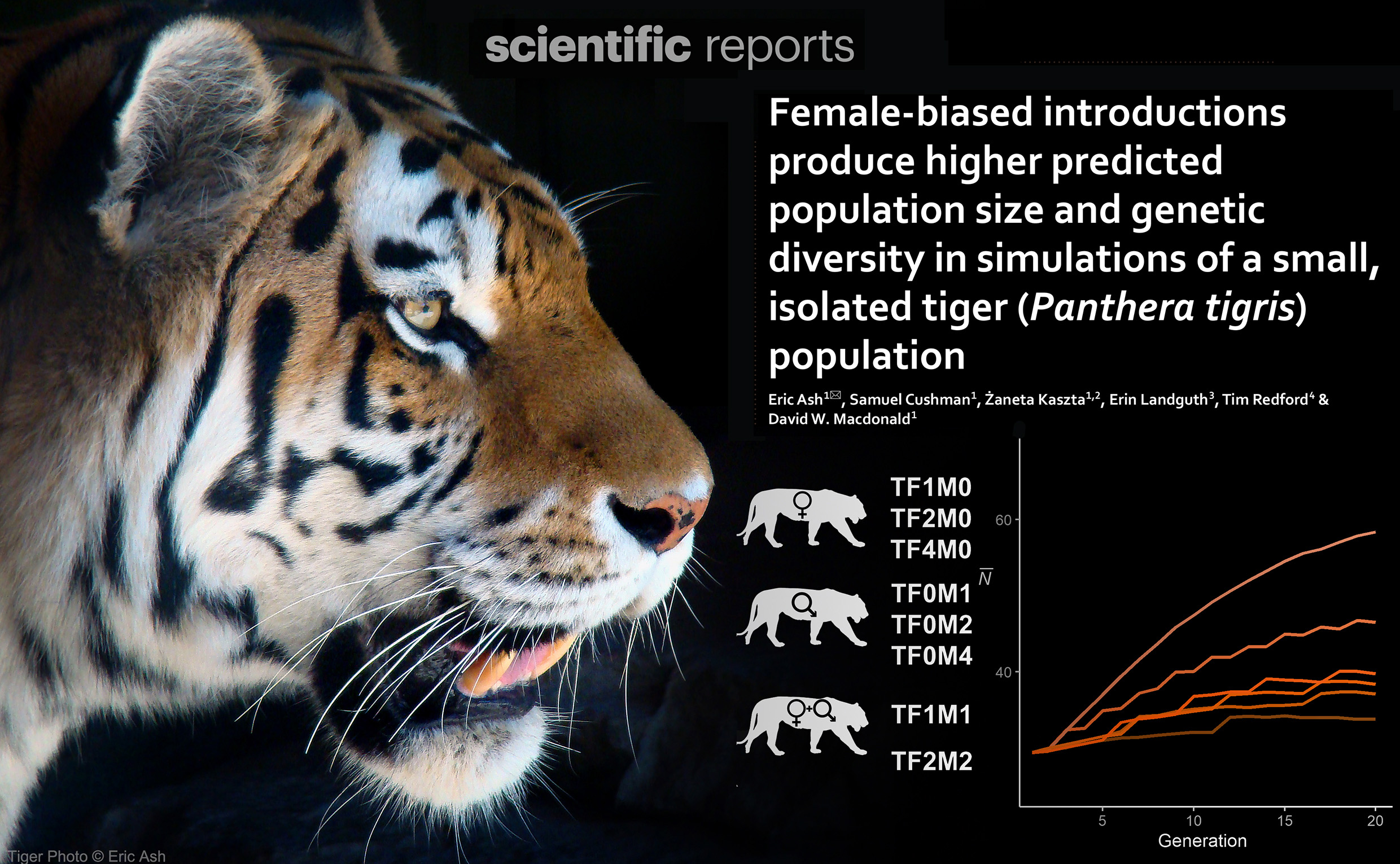News
Modelling tiger population numbers and genetic diversity in the context of translocations: New WildCRU research published
The persistence of tigers remains threatened by habitat loss and fragmentation, resulting in the reduction and isolation of key populations, particularly in Southeast Asia. Tigers require large tracts of habitat to survive and the recent isolation of many small populations may lead to reduced genetic diversity, potentially compromising their persistence and resilience. In similar species, this has manifested through reduced fertility levels and offspring survival, as well as increased vulnerability to disease and the impacts of climate change.
A new paper led by WildCRU researcher Dr. Eric Ash, published in Scientific Reports, looked at these crucial factors in the context of theoretical tiger translocations in Thailand’s Dong Phayayen-Khao Yai (DPKY) forest complex. The DPKY is currently a key refuge for the Indochinese tiger (P. tigris corbetti) – one of the most endangered subspecies, now thought to number only around 200 individuals living in Myanmar and Thailand. The forest complex supports a small, isolated breeding population of approximately 30 individuals.
Wildlife conservation efforts of isolated and vulnerable populations may be improved by translocation initiatives to introduce individuals from other areas to sustain or re-establish species populations. Many variables influence the success of such initiatives both in terms of overall population growth as well as genetic diversity.
The study aimed to evaluate the potential effect of such translocations. Authors simulated the DPKY tiger population over 20 generations (around 100 years) in its current state, then evaluated the relative impact of tiger translocations from a related population on the trajectory of the population and its genetic diversity. Exploring variations in the number, frequency and sex of individuals translocated, the analysis showed that translocation of females consistently resulted in higher population numbers and genetic richness compared to translocations of males. However, genetic diversity was shown to decline markedly over time unless additional individuals are introduced at regular intervals. Findings suggest that adding four females every generation or alternate generation (5-10 years) would be ideal.
This work thus provides important insight into the potential trajectory of the tiger population in DPKY, and more broadly illustrates the crucial importance of monitoring and managing genetic inheritance in small populations of endangered species.
Habitat loss and fragmentation are resulting in the reduction and isolation of wildlife populations the world over, presenting a threat to many species. Tigers and other large carnivores are particularly vulnerable, with potential cascading impacts on the broader ecosystem arising from their demise. Management of small, isolated populations to maintain genetic diversity is thus emerging as a key conservation challenge in the twenty-first century.
This study provides novel insight not only for tiger management and population modelling, but also for other large carnivores facing similar threats.
—
Ash, E., Cushman, S., Kaszta, Ż., Landguth, E., Redford, T., Macdonald, D.W., 2023. Female-biased introductions produce higher predicted population size and genetic diversity in simulations of a small, isolated tiger (Panthera tigris) population. Scientific Report 13, 11199. https://doi.org/10.1038/s41598-023-36849-z







